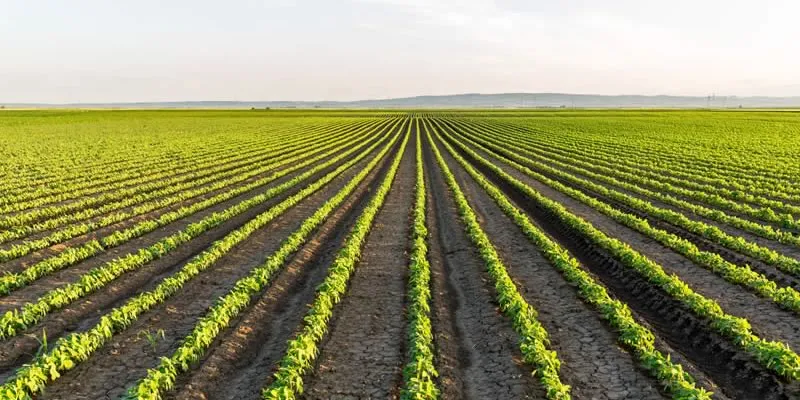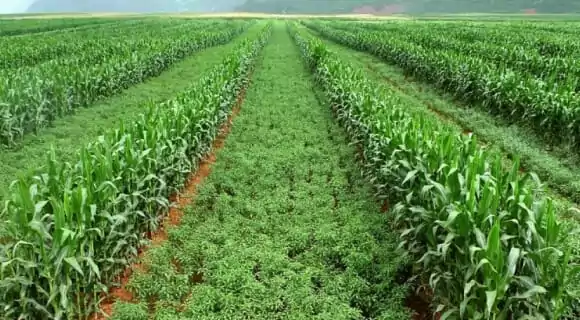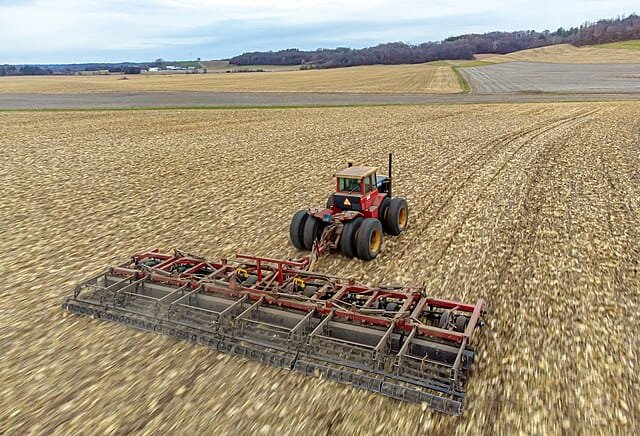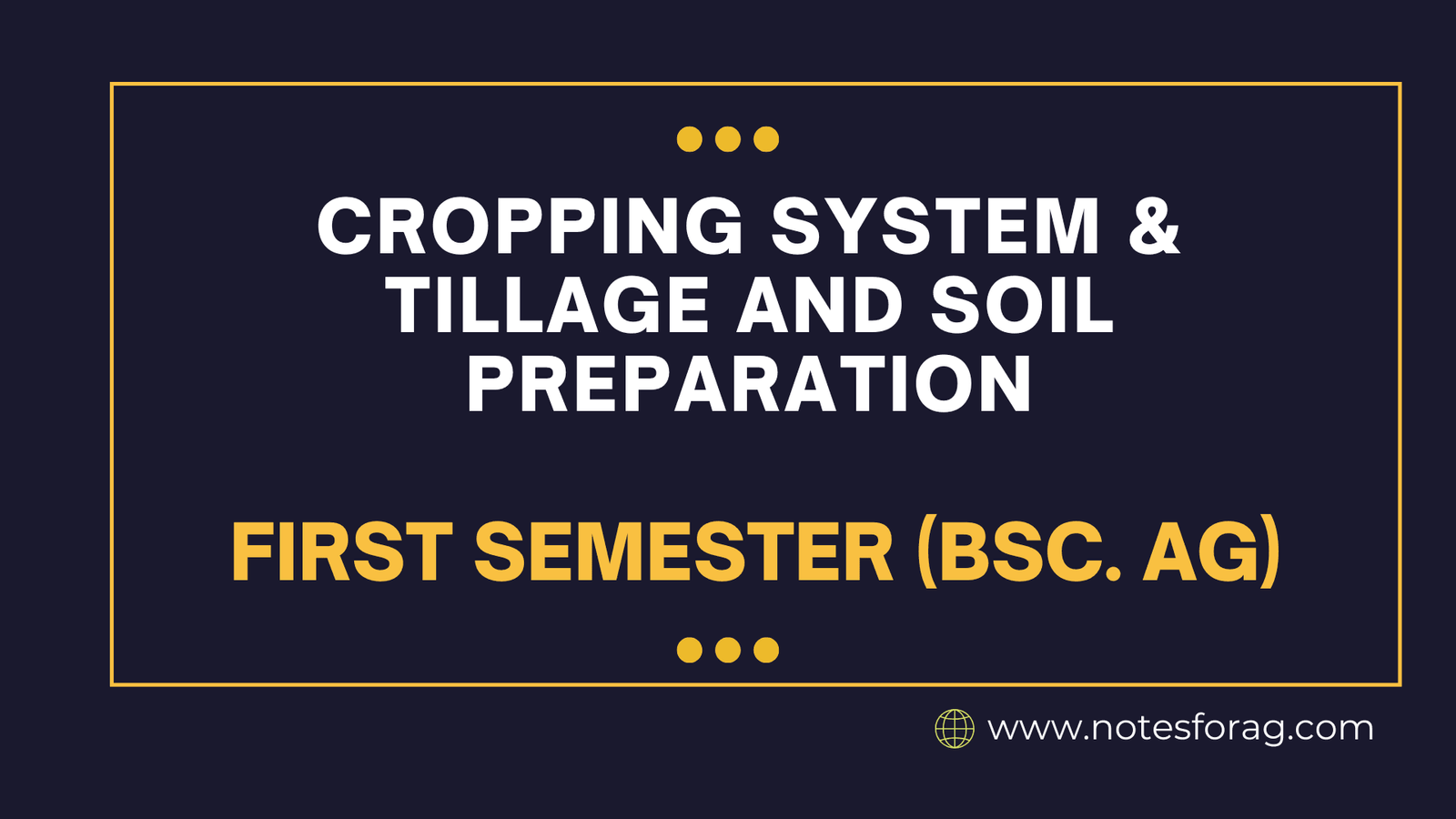Cropping Systems

When we talk about cropping systems, we’re really exploring the methods that farmers use to grow crops in ways that maximize yield, improve soil health, and reduce pests and diseases. Cropping systems are not a one-size-fits-all approach; they are chosen based on the climate, soil type, available resources, and the goals of the farmer. Let’s explore the three major types: monocropping, intercropping, and crop rotation.
Table of Contents
Monocropping
Monocropping means planting the same crop on the same piece of land year after year. Picture a vast field of corn or wheat every row planted with one crop. This system has been widely used in industrial agriculture because it simplifies many aspects of farming.
Why Farmers Use Monocropping
Simplicity and Specialization: Since only one type of crop is grown, farmers can specialize in that crop. They can invest in specialized machinery and farming practices that streamline everything from planting to harvesting.
Economies of Scale: Growing a single crop allows for large-scale production, which can lower the costs of planting, managing, and harvesting. This is particularly important in commercial farming where efficiency is key.
Consistency: When you grow the same crop repeatedly, you learn exactly what the plant needs and how it behaves. This predictability can lead to more consistent yields over time.
Downsides of Monocropping
Soil Depletion: Each crop takes a specific set of nutrients from the soil. Over time, if the same crop is grown repeatedly, those nutrients become scarce. This means the soil loses its fertility unless replenished through fertilizers.
Pest and Disease Vulnerability: When the same crop is planted over and over, pests and diseases that target that particular plant can quickly multiply. It’s like giving them a continuous buffet, which might force farmers to rely heavily on chemical pesticides.
Environmental Impact: Heavy use of fertilizers and pesticides to support monocropping can lead to environmental issues such as water pollution and loss of biodiversity.
While monocropping can be very efficient, it requires careful management to ensure long-term sustainability.
Intercropping

Intercropping is like creating a natural team in the field. Instead of a single crop, farmers plant two or more crops together. These plants are chosen because they complement each other and can provide mutual benefits. A classic example is the “three sisters” method used by some Native American cultures, where corn, beans, and squash are grown together.
The Benefits of Intercropping
Efficient Land Use: With intercropping, more than one crop is harvested from the same area. This can be particularly beneficial for small farms where maximizing every inch of land is crucial.
Natural Pest Management: Different crops can repel pests or make it more difficult for a single pest to spread across the entire field. For instance, certain plants may emit natural chemicals that ward off insects.
Improved Soil Health: Different crops use nutrients in various ways. Some plants, like legumes (beans, peas, lentils), have the unique ability to fix nitrogen in the soil, which helps to replenish soil fertility naturally.
Diverse Harvest: With more than one crop grown together, there is a natural diversification of products, which can provide both dietary variety and economic security for the farmer.
Challenges with Intercropping
Management Complexity: Intercropping requires careful planning. Farmers must understand how different crops interact and ensure that they do not compete excessively for water, nutrients, or light.
Harvesting Issues: Different crops have different growth cycles and harvesting times. This can complicate the process, as machines or manual labor may not be equally effective on mixed crops.
Balancing Nutrient Needs: While some crops may help the soil, others might be heavy feeders. Farmers need to balance these differences to ensure that no crop starves for nutrients.
Intercropping represents a more balanced, environmentally friendly approach that can be especially advantageous in organic and sustainable farming practices.
Crop Rotation
Crop rotation involves changing the type of crop grown on a particular piece of land in a planned sequence over several seasons. Instead of sticking with one crop, a farmer might grow corn one year, followed by soybeans or a cover crop the next, and perhaps wheat in another season.
How Crop Rotation Benefits Farming
Soil Fertility Management: Different crops draw out and replenish different nutrients from the soil. For example, legumes add nitrogen to the soil, which benefits the following crops. This natural balance helps maintain or even improve soil fertility over time.
Weed and Pest Control: Many pests and diseases are crop-specific. By rotating crops, farmers break the cycle of pests that depend on a particular host, reducing the overall pest pressure.
Reduced Chemical Use: With improved natural fertility and pest control, farmers may be able to reduce the use of synthetic fertilizers and pesticides, leading to a more sustainable farming system.
Improved Soil Structure: Rotating deep-rooted and shallow-rooted crops can improve the soil structure, making it more resistant to erosion and better at retaining moisture.
Potential Drawbacks of Crop Rotation
Planning Demands: Crop rotation isn’t something that can be decided on the fly. It requires a long-term plan and a good understanding of how different crops interact with each other.
Economic Considerations: Some rotations might include crops that are not as profitable or in high demand, which can affect a farmer’s income in the short term.
Learning Curve: Farmers need to become knowledgeable about a variety of crops and their specific needs, which may require additional training or research.
Crop rotation is one of the most sustainable and beneficial systems, as it promotes a healthy, living soil while reducing the need for chemical inputs.
Tillage and Soil Preparation

Before any seed touches the ground, the soil must be prepared. Tillage and soil preparation are fundamental practices in agriculture that create the best possible environment for crops to germinate, grow, and yield a productive harvest. This preparation involves a combination of mechanical, biological, and sometimes chemical processes.
Conventional Tillage
Conventional tillage is the traditional method of preparing soil. This process involves physically turning and loosening the soil using plows, disc harrows, or similar tools. Imagine a field that’s been plowed by a tractor, with rows of furrows crisscrossing the land.
Benefits of Conventional Tillage
Improved Soil Aeration: When the soil is turned over, it becomes looser and more aerated. This allows roots to penetrate deeper and access more nutrients.
Mixing Organic Matter: By tilling the soil, farmers can mix crop residues and organic matter from previous harvests back into the soil. This not only recycles nutrients but also improves soil texture.
Weed Control: Tillage can physically uproot weeds and bury them, which helps to reduce their competition with the crops.
Drawbacks of Conventional Tillage
Soil Erosion Risk: Constantly turning the soil can expose it to wind and water, which may lead to erosion of the valuable top layer.
Moisture Loss: Exposed, tilled soil can lose moisture more quickly than soil that is left undisturbed. This can be a significant issue in dry climates.
Labor and Energy Intensive: Conventional tillage often requires heavy machinery or a lot of manual labor, both of which add to the cost and environmental footprint of farming.
While conventional tillage can jump-start a new growing season by preparing the soil quickly, it comes with significant drawbacks that have led many farmers to explore alternative methods.
In recent decades, there has been a growing interest in conservation tillage, a set of practices designed to minimize soil disturbance. These methods aim to reduce erosion, improve water retention, and promote healthier soil ecosystems.
Types of Conservation Tillage
No-Till Farming: In no-till farming, the soil is left almost entirely undisturbed. Seeds are planted directly into the residue of previous crops. This method helps maintain soil structure and moisture.
Strip Tillage: Here, only narrow strips of soil are tilled where the seeds will be planted, leaving the rest of the field intact. This approach is a compromise between no-till and conventional tillage.
Mulch Tillage: In this method, crop residues such as straw or leaves are left on the field to act as a natural mulch. The mulch protects the soil surface, reduces erosion, and helps conserve moisture.
Advantages of Conservation Tillage
Soil Erosion Control: With less disturbance to the soil, the protective cover of crop residues remains in place, significantly reducing erosion caused by wind or rain.
Enhanced Water Retention: Conservation tillage helps the soil retain moisture, which is especially beneficial in areas prone to drought.
Boosted Soil Biodiversity: By leaving the soil less disturbed, beneficial organisms like earthworms, microbes, and fungi thrive. These organisms play critical roles in breaking down organic matter and cycling nutrients.
Lower Fuel and Labor Costs: Less intensive tillage means reduced fuel usage and lower labor requirements, making this approach more cost-effective in the long run.
Challenges of Conservation Tillage
Slower Soil Warming: Since the soil remains covered with residues, it might take a bit longer for the soil temperature to rise in the spring. This can delay planting in colder regions.
Weed Management: Without the disruption caused by conventional tillage, weeds may emerge more easily. Farmers often have to use alternative weed management strategies, such as cover crops or targeted herbicide applications.
Initial Transition: Switching from conventional to conservation tillage can be a learning curve. Farmers may need to adjust their planting techniques and invest in new equipment.
Additional Soil Preparation Techniques
Beyond tillage, several other soil preparation methods help create a thriving environment for crops. These include:
Adding Organic Matter:
Incorporating compost, manure, or green manure crops can improve soil fertility and structure. Organic matter not only feeds the soil but also helps retain moisture and provides a habitat for beneficial organisms.
Field Leveling:
Leveling the land ensures that water is distributed evenly across the field. This reduces the risk of waterlogging in some areas and drought stress in others.
Soil Testing:
Before planting, many farmers conduct soil tests to measure nutrient levels and pH. This information is essential to determine which fertilizers or amendments are needed, ensuring that crops receive balanced nutrition.
Irrigation Preparation:
Proper soil preparation also involves ensuring that irrigation systems are in place and that the soil is ready to absorb water efficiently. This might involve the creation of drainage systems or the application of moisture-retaining polymers in some cases.
In the world of agriculture, both cropping systems and soil preparation are the foundation of successful farming. The choice between monocropping, intercropping, and crop rotation depends largely on the farmer’s goals, environmental conditions, and long-term sustainability plans. Monocropping offers simplicity and efficiency but can lead to soil degradation and pest issues over time. Intercropping provides a natural balance by mixing crops to benefit each other, while crop rotation is a time-tested method for maintaining soil health and breaking pest cycles.
For farmers today, the challenge is finding the right balance between immediate productivity and long-term sustainability. By understanding these systems and techniques, one can appreciate the intricate work that goes into producing the food on our tables and the ongoing efforts to maintain and improve the health of our agricultural lands. The goal is always to nurture the soil this living, breathing medium so that it can support future generations of crops, ensuring a steady, healthy food supply for everyone.
Likewise, the methods of soil preparation from conventional tillage to conservation practices—play a crucial role in setting the stage for healthy crop growth. Conventional tillage can give an immediate start by loosening the soil and controlling weeds, yet it may contribute to long-term soil erosion and moisture loss. Conservation tillage, on the other hand, helps preserve the soil structure, reduces erosion, and promotes biodiversity, though it may require more nuanced weed control and adjustments during seasonal transitions.
Frequently Asked Questions
What are the differences between monocropping, intercropping, and crop rotation?
Monocropping grows a single crop repeatedly, making management easier but depleting soil nutrients and increasing pests. Intercropping plants multiple crops together, improving nutrient use and pest control. Crop rotation changes crops seasonally, maintaining soil fertility and reducing pest buildup.
How does conservation tillage differ from conventional tillage?
Conventional tillage turns soil for aeration and weed control but causes erosion and moisture loss. Conservation tillage minimizes soil disturbance, retains moisture, and protects soil but may require extra weed management.
How do these agricultural practices impact long-term soil health?
Crop rotation and intercropping maintain nutrients and prevent pests, while conservation tillage preserves moisture and organic matter. Monocropping and conventional tillage can degrade soil, increasing reliance on fertilizers and pesticides.
Related Articles

